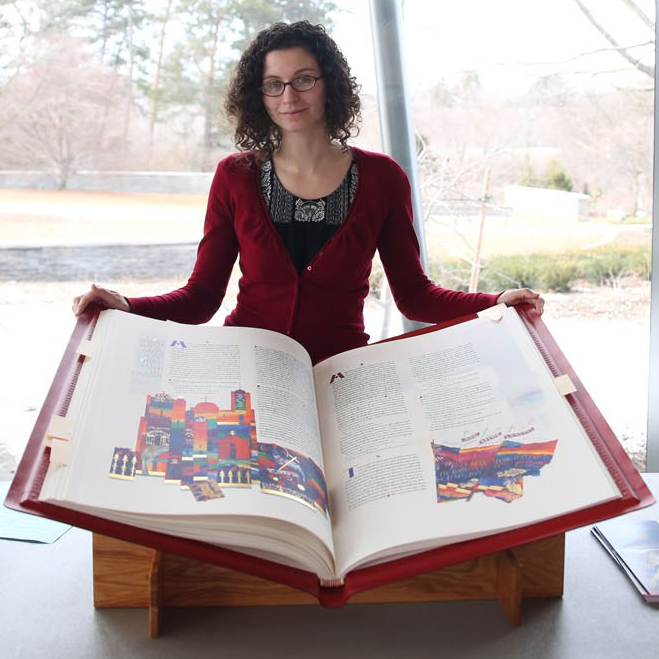
Hi, I’m Bridget Ker and I’m the Coordinator of The Saint John’s Bible and Archival Technician at the Bishop Farrell Library and Archives. I have been the Coordinator of The Saint John’s Bible since March 2017.
I am a Hamilton native who has been working in the museum/heritage/culture field for twelve years. I spent my undergraduate years at the University of Western Ontario and received a Bachelor of Arts in Anthropology. I followed that by completing a Masters of Museum Studies at the University of Toronto. My career path has led me through the CNE Archives, the Canadian Golf Hall of Fame and Museum, a brief stint at the Diocesan Archives in 2008, and a long stretch at the St. Catharines Museum. I returned to the Diocese of Hamilton in 2016, working as an Archival Technician, and taking on the role of Coordinator of The Saint John’s Bible in 2017.
As Coordinator, I am the first point of contact for anyone who would like to explore or book the Diocese’s Saint John’s Bible Heritage Edition. Along with a small team of docents, we bring the Bible to schools, parishes, and community groups – anyone who asks! You can find out more about our Heritage Edition by visiting https://hamiltondiocese.com/stjohnsbible/
When I’m not at the BFLA or out with the Bible, my husband and I are parents to a very tall 5 year old. We try to get outside as much as possible to enjoy the natural world around us – walking along the Niagara Escarpment and searching for hidden waterfalls. When we don’t, we watch a lot of cartoons together.
While I spend most of my time with The Saint John’s Bible, some of my favorite objects in our collections are the ones for which I created customized supports and enclosures. I love being able to work with my hands and build things from scratch to protect the objects in the archival collection. Some objects in long-term storage need extra help to stay safe while in the archives. The first object I built supports and enclosure for was a monstrance. A monstrance is used to hold a consecrated host for adoration and during processions. They are often very ornate and the one I worked with is no exception.
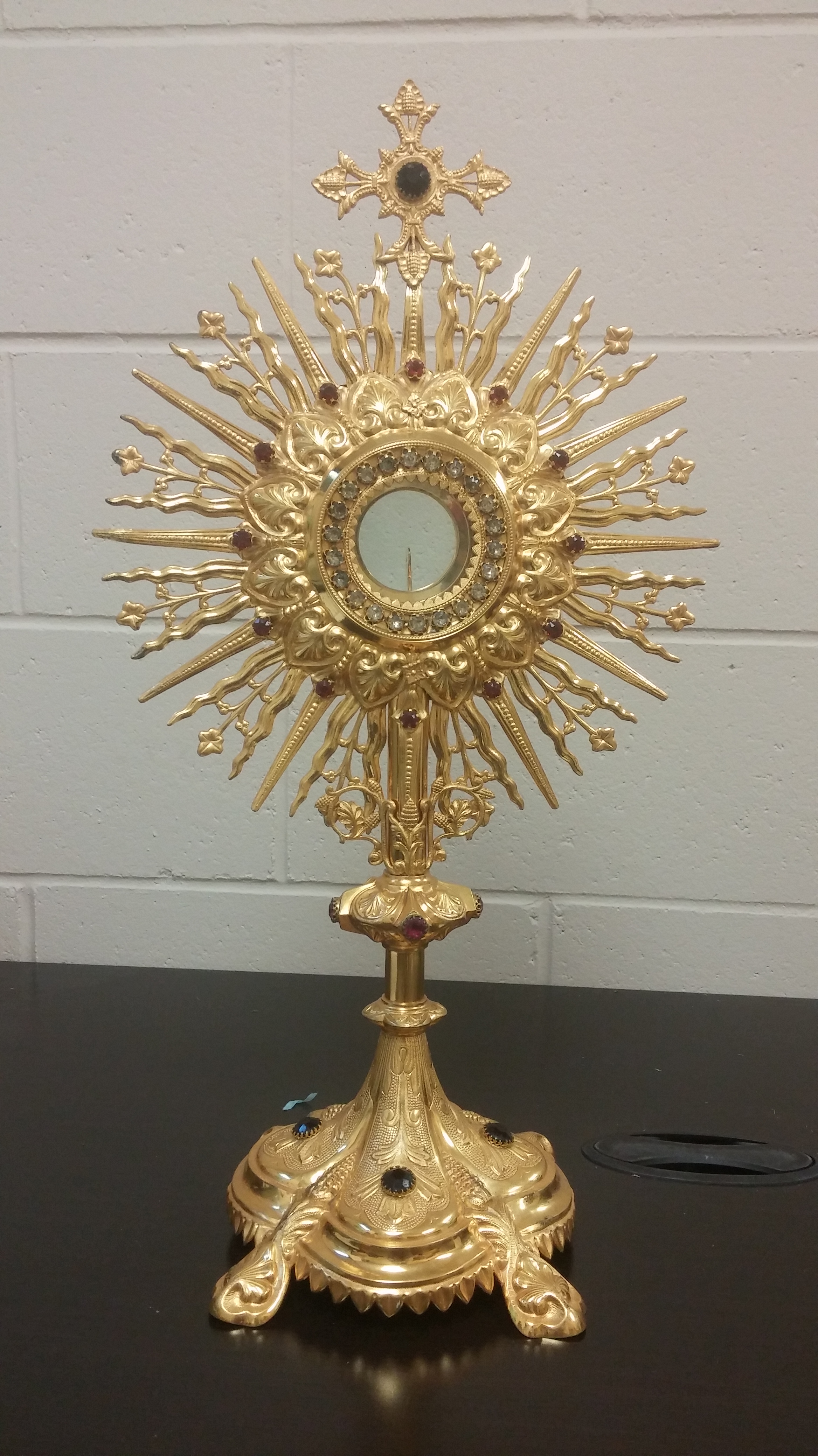
(Accession #2017.022)
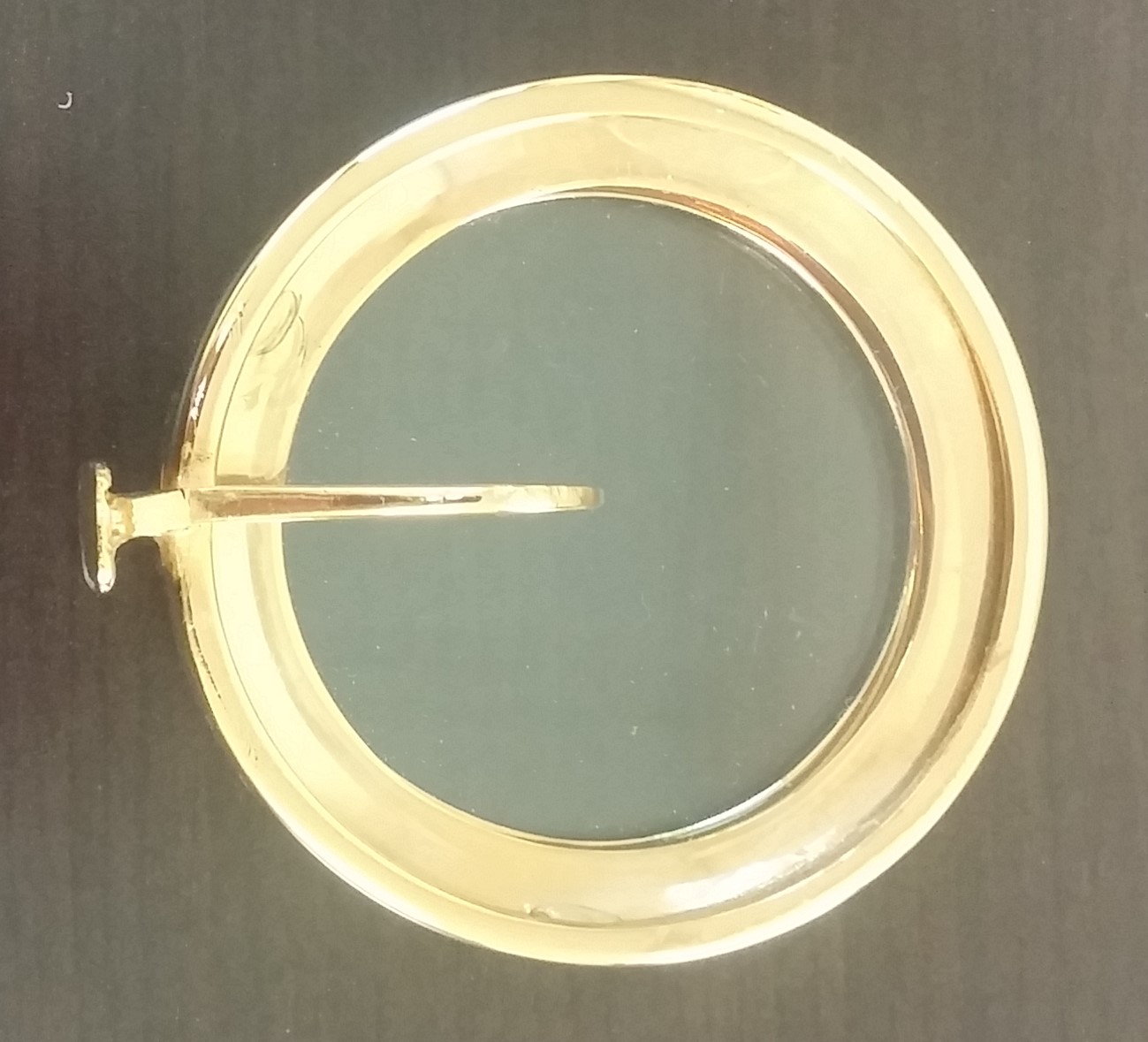
(Accession # 2017.022)
The monstrance in our collection has a sunburst design and a jeweled base. It has a separate lunette, seen on the right, into which a consecrated host is placed. It is very tall and not very stable. We could not store it as is on our movable shelving without the risk of it falling over. It could not lay flat on the shelves either since without support, parts of the monstrance would be under stress and could get damaged. The lunette would have to be stored separately, rather than in the body of the monstrance, to reduce risk of causing damage whenever the monstrance was moved. What it needed was a custom support and box.
To build the support, I began by hot-gluing together sheets of archival foam so that I would have a block of foam that was about the same depth as the monstrance when it was laid on its side, and slightly larger than its maximum height and width. I trimmed the sheets using a very sharp foam knife. Then, I placed the monstrance (on its back) and lunette on the foam and traced their outlines with a pencil.
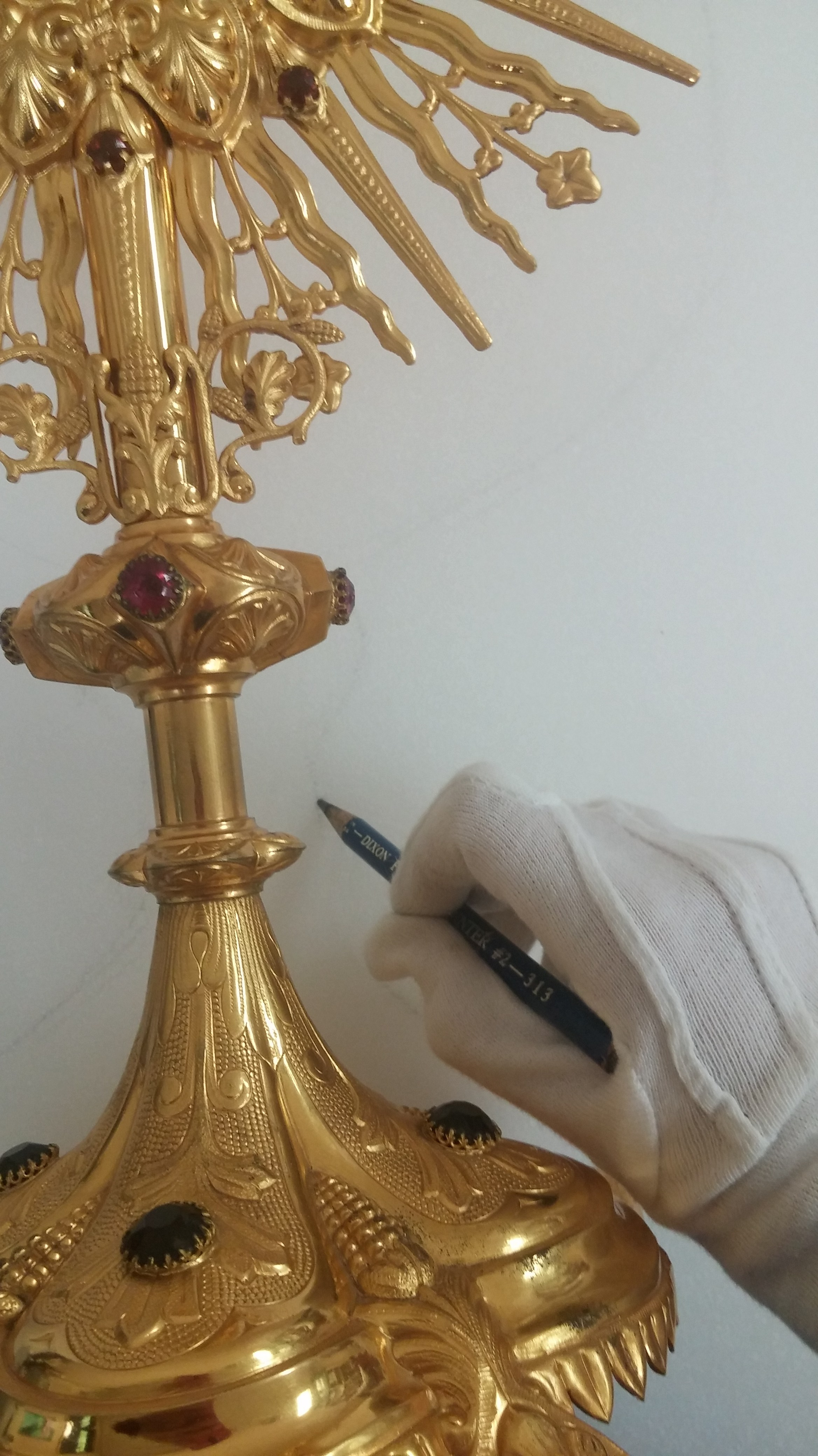
(Accession # 2017.022)
Once the outlines were complete, I began creating two cavities to house the monstrance and lunette. I measured both of them, with a particular focus on the depth of the monstrance so I would have a good idea of how deep the cavity would need to be. The cavity needed to cradle the monstrance so that the stress of lying of its back was distributed and nothing would bend while it is in storage. I carved out the cavity using a utility knife, going slowly and frequently placing the monstrance in it to test the depth. In some places, I had to build up using small pieces of foam when I carved out a bit too much, to ensure that all parts of the monstrance would be supported. The lunette was a bit easier to carve at it has a flat base.
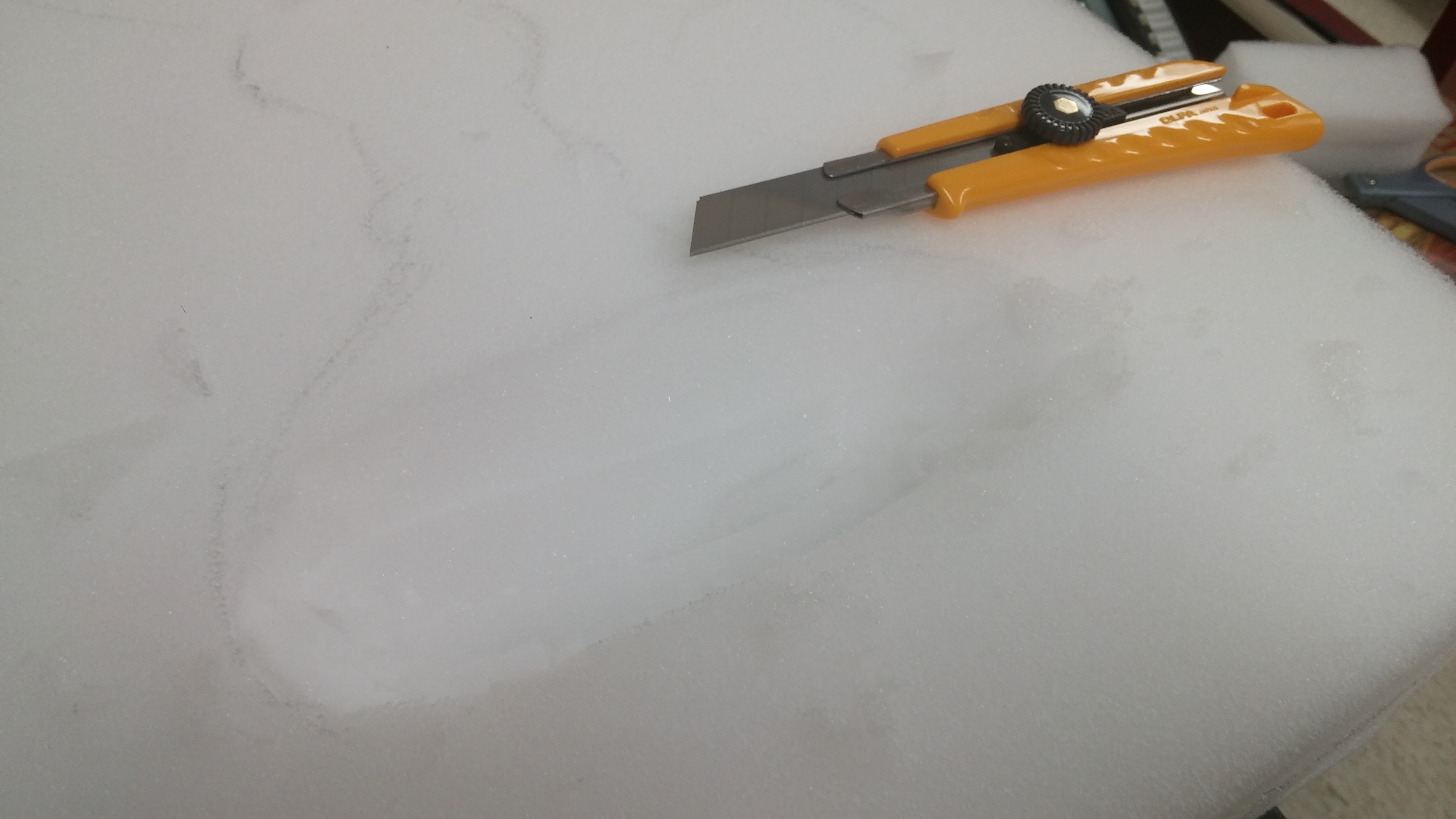
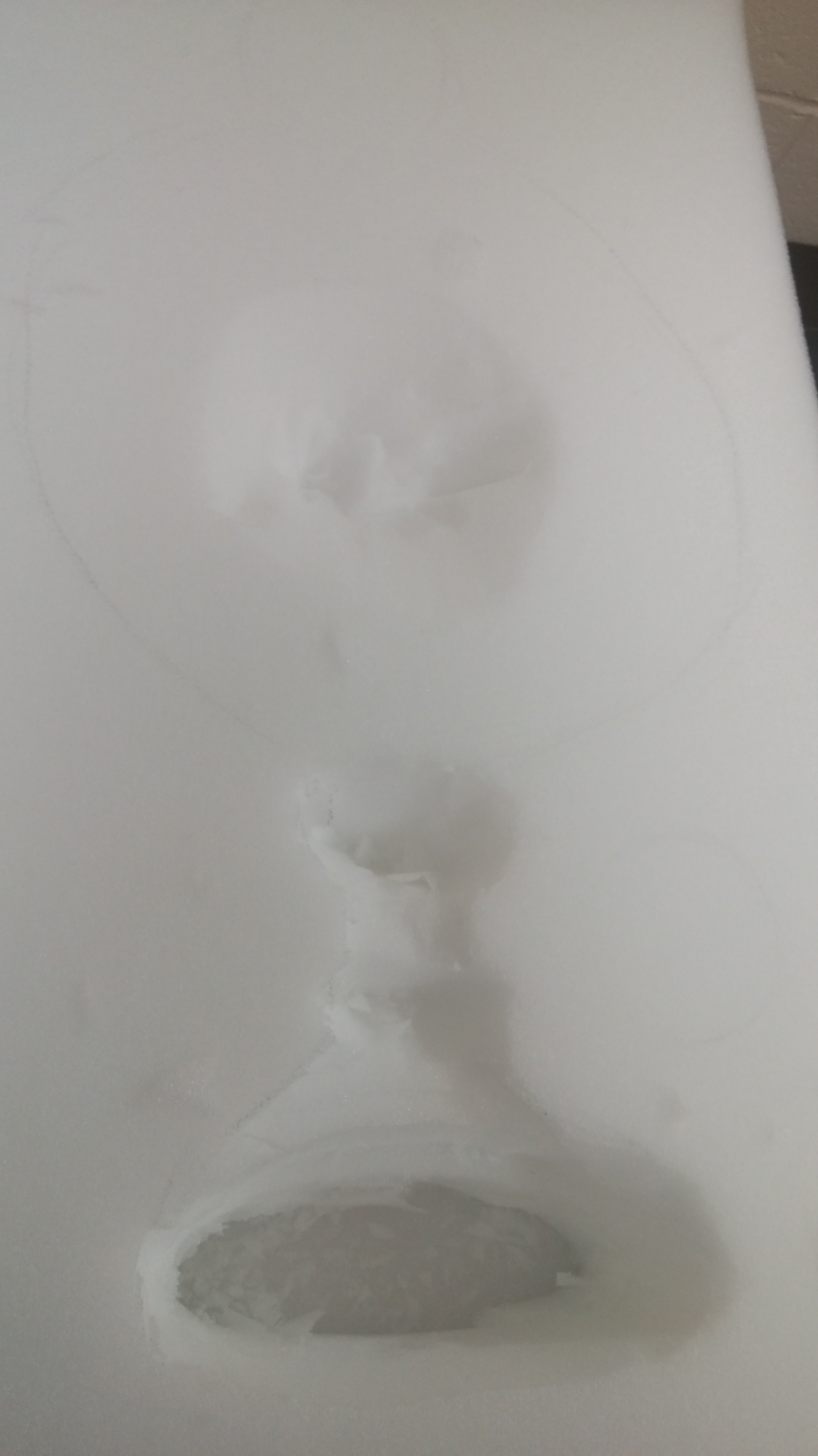
The process of carving the foam leaves it abrasive, so before the monstrance and lunette were placed in the support, its surface and cavity were covered in archival tissue paper. First, I crumpled the tissue to make it more flexible, so that I could work it into the spaces I had carved out with less risk of it tearing. Then, I had to anchor the tissue to the foam. To do this, I made horizontal slits in the sides of the foam. I started at one side and tucked one edge of the tissue into the slits. Next, I loosely pulled the tissue over the foam to cover it and placed the objects in their cavities, allowing the tissue to fill the space around them. I then tucked the remaining tissue into the slits on the other side of the foam.
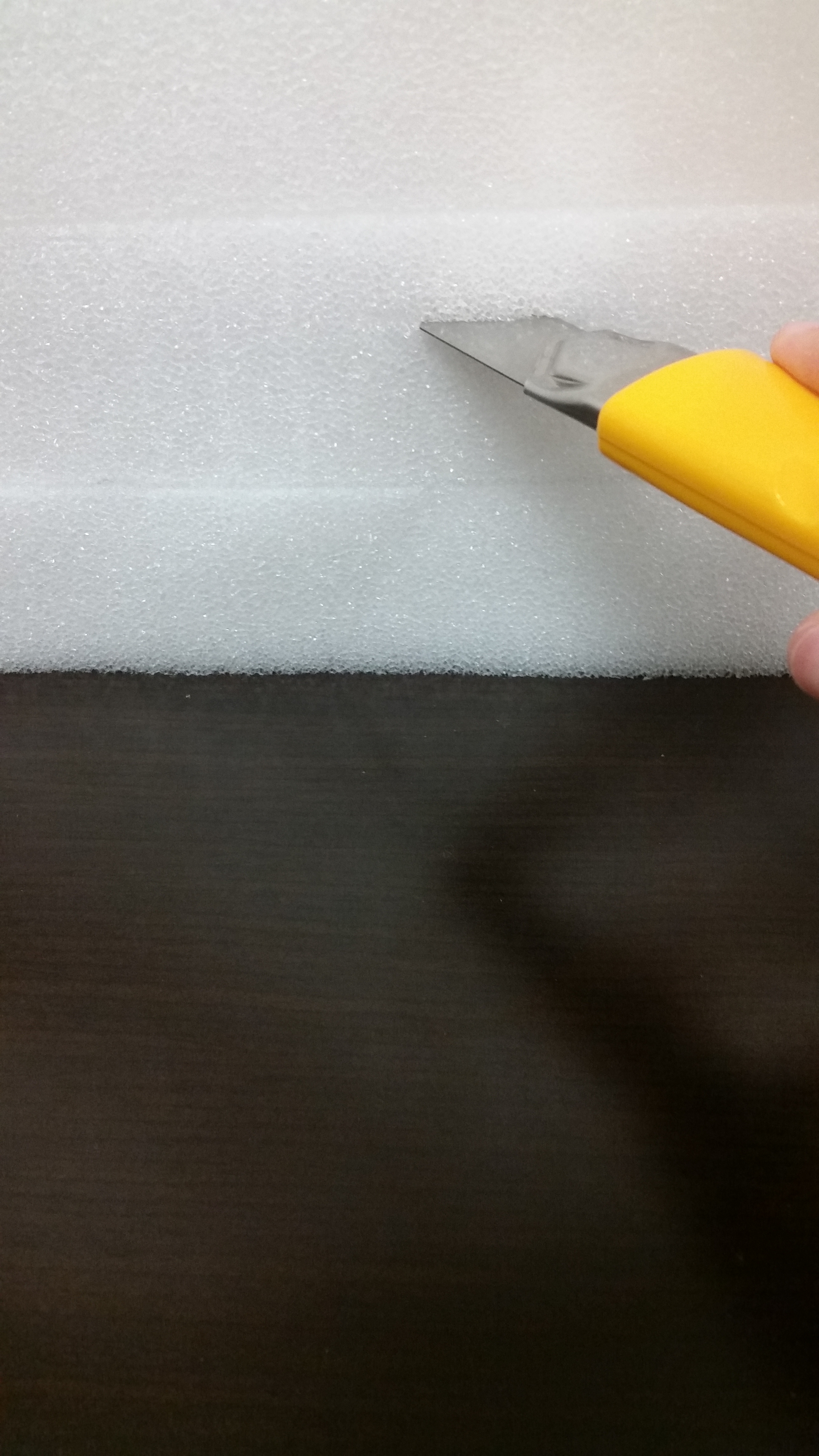
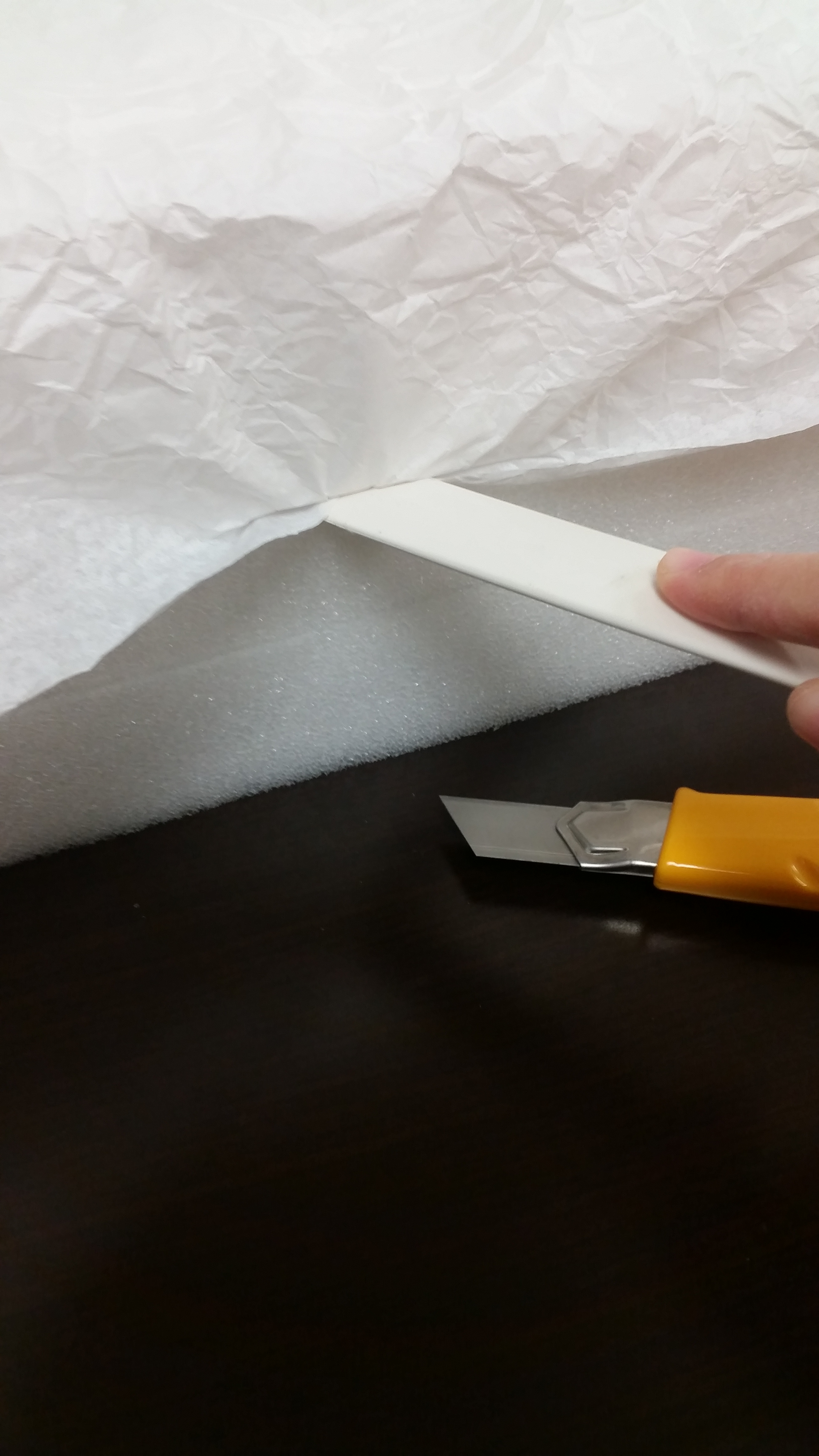
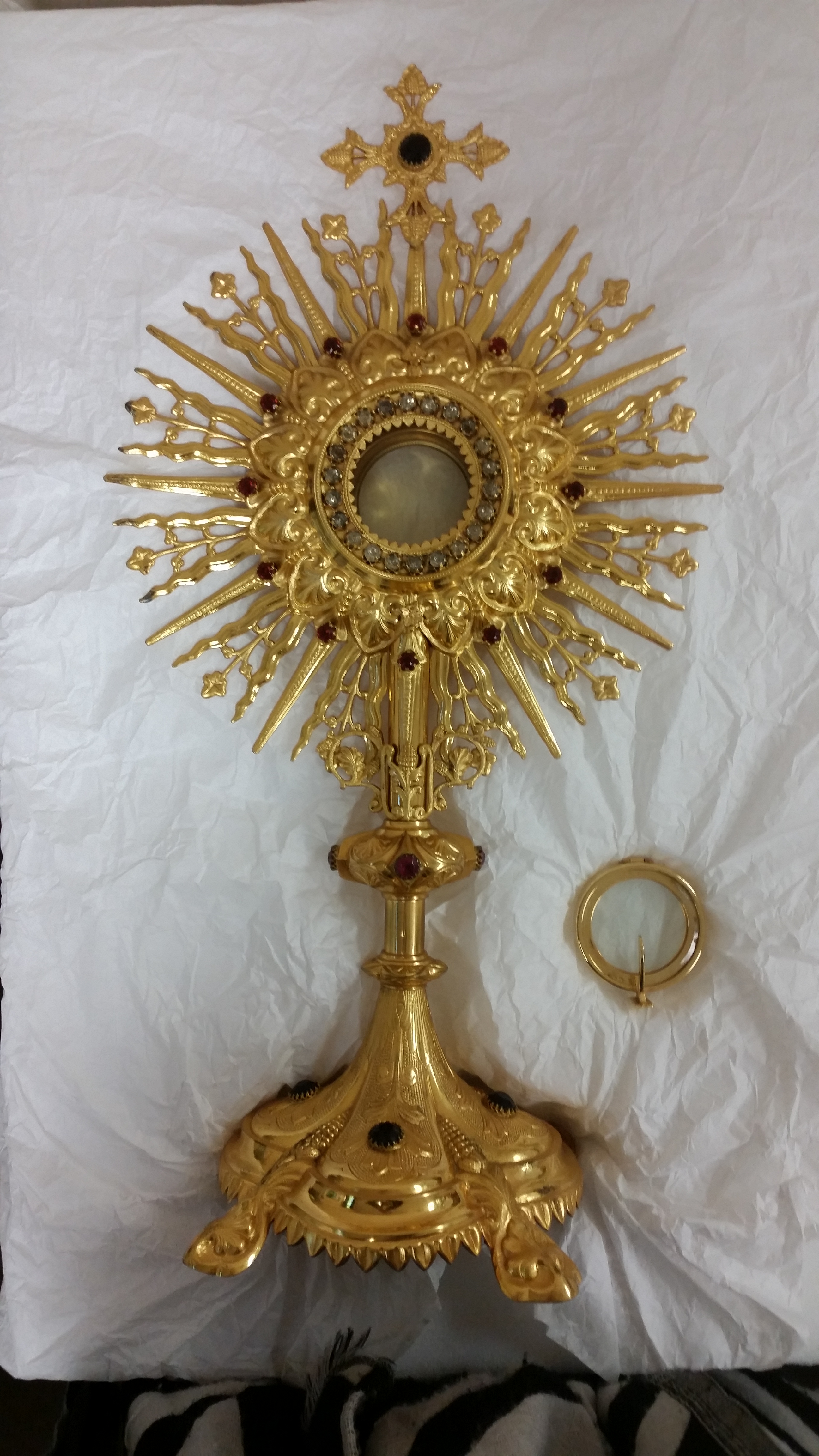
(Accession #2017.022)
At this point, the monstrance and lunette were secure and could be placed on a shelf in long-term storage. I went a bit farther and built a box in which the foam support and objects could sit. But that is a posting for another day!
You can learn more about the Bishop Farrell Library & Archives and the services we provide in the post A little bit about “our shelves…” or by checking us out on the Diocese of Hamilton website.